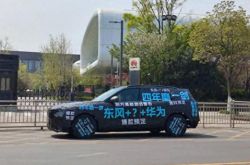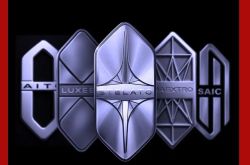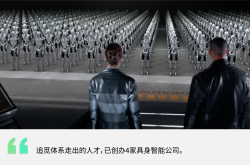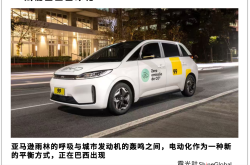From "Scholar" to "Warrior": The Transformation of NIO
![]() 11/28 2025
11/28 2025
![]() 417
417

Author | Xi Zhi
Editor | Wu Xianzhi
At the beginning of the year, when NIO set its sights on achieving profitability in the fourth quarter, most people dismissed the goal as mere wishful thinking. Firstly, William Li's previous pledges regarding profitability had never come to fruition. Secondly, the target hinged on two critical prerequisites: achieving monthly average sales of 50,000 units and maintaining gross margins of 20% for the NIO brand and 15% for the Ledo brand.
In contrast, NIO's monthly average sales in the fourth quarter of the previous year were less than 25,000 units, marking a historic high for a single quarter at that time. The vehicle gross margin stood at 13.1%, and the combined gross margin was 11.7%. In the first quarter of this year, NIO's monthly average deliveries amounted to 14,000 new vehicles, with a vehicle gross margin of 10.2%.
The turning point came in July when the Ledo L90 and the new ES8 sparked a surge in orders, making fourth-quarter profitability seem within reach. However, many still questioned whether NIO's strategy, seen as a desperate move to boost sales through price cuts, could actually translate into profits.
On November 25, NIO released its third-quarter results for the year, with multiple core metrics reaching all-time highs. Deliveries soared to 87,071 units, marking a year-on-year increase of over 40% and a sequential increase of over 20%. Revenue reached RMB 21.79 billion, up 16.7% year-on-year and 14.7% sequentially.

Despite the average selling price per vehicle continuing to decline to RMB 220,000, NIO's combined gross margin for the quarter reached 13.9%, and its vehicle gross margin hit 14.7%, both setting new records. This not only indirectly refuted external skepticism about "boosting sales through price cuts" but also indicated a gradual improvement in NIO's cost control capabilities.
More optimistically, NIO's cash reserves reached RMB 36.7 billion in the third quarter, achieving positive operational and free cash flows for the first time. The delivery volume and revenue guidance for the fourth quarter are expected to see significant increases, with year-on-year growth exceeding 65%.
However, from a rational perspective, fourth-quarter profitability remains a challenge. NIO's adjusted operating loss for the third quarter was RMB 2.776 billion, down 39.5% year-on-year and 31.3% sequentially. Although William Li expressed confidence in fourth-quarter profitability during the earnings call, a low single-digit loss is more likely based on fourth-quarter guidance and other indicators.
Of course, profitability is more of an obsession. The fact that NIO is on a comprehensive upward trajectory is undeniable. From a series of organizational and product philosophy changes this year, it is evident that the company's character is evolving. If NIO was once an idealistic "scholar," it now resembles a "warrior."
Rejoining the Top Tier
Since last year, NIO has lagged behind for far too long. It has been significantly outperformed in sales by Li Auto and XPeng, which turned around earlier, as well as by Seres, Leapmotor, Xiaomi, and even Zeekr and Deepal. For a considerable period, NIO even struggled to make it into the top six of the new energy vehicle sales rankings.
The much-anticipated Ledo L60 had a promising start but a disappointing finish, missing out on the best period for dividends due to production capacity issues. Coupled with ongoing controversies over its battery swap strategy and substantial annual losses, NIO may have gained a deeper understanding of being in the "ICU" than any other new energy vehicle company.
The turning point came in August this year when deliveries surged by over 10,000 units from July, setting a new record for NIO's monthly deliveries. The Ledo L90 was the biggest contributor, directly adding over 10,000 units. This product's significance to NIO is comparable to that of the MONA M03 to XPeng.
Following the launch of the third-generation ES8, NIO continued to set new delivery records in the following months, breaking through 40,000 units in October and reclaiming the glory of being an established new energy vehicle player. However, Li Auto took NIO's place at the bottom, struggling with a severe decline in extended-range models and underperforming pure electric vehicles, forcing it to "make up for lost ground."

NIO's stock price is the best reflection of its overall recovery. This year, NIO's cumulative gain in the Hong Kong stock market is about 35%, with a monthly gain exceeding 45% in August. The strong sales of the Ledo L90 and the new ES8 effectively boosted market confidence.
During the third-quarter earnings call, William Li stated that orders for high-margin models remain strong, especially for the new ES8, which still has a large backlog. He also mentioned that battery swap stations in core cities like Shanghai are approaching profitability and are expected to achieve overall profitability next year.
However, Li also issued a "warning," stating that the phasing out of trade-in subsidies in the fourth quarter would significantly impact the market, making it difficult for the entire industry to replicate last year's "year-end surge." In other words, the fourth quarter is unlikely to see significant growth, which is why NIO only provided guidance for 120,000 to 125,000 deliveries in the fourth quarter, despite delivering over 40,000 units in October. Maintaining October's performance will be no easy feat.
The Firefly, previously not highly regarded, not only consistently contributes over 4,000 deliveries per month but also fulfills its initial goal of expanding into global markets, having entered multiple European countries. In mid-November, the right-hand drive version of the Firefly officially entered mass production and is set to begin its journey in Singapore.
Perhaps the only short-term issue NIO faces is still production capacity ramp-up.
Entering Combat Mode
NIO's recovery seems sudden, as if it "got better overnight." While there may be an element of luck in capitalizing on the pure electric large six-seater SUV trend, it is more of a concentrated release of NIO's long-term accumulated momentum in the premium segment and its user-centric capabilities.
Some argue that the Ledo L90's success lies in its "affordability," which is indeed a significant factor. However, when compared horizontally, large six-seater, fully equipped vehicles priced at just over RMB 200,000 are not rare, but few sell well.
The Ledo L90's breakthrough can still be attributed to NIO's strong brand power, technological prowess, and service capabilities. Even as a lower-tier brand, Ledo inherits enough momentum to attract buyers. The most typical example is the deployment of the NT3.0 platform, which is a significant advantage in the Ledo L90's price range.

Additionally, features like an extra-large front trunk, a third-row space that is no longer just a "gimmick," a flexible battery swap and charging solution, and the highly adaptable Baas (Battery as a Service) scheme all align well with user needs, continuing to demonstrate what it means to have "user-centric" insight. Therefore, it is more accurate to say that this is a realization of value rather than just a "hit product" success.
Even in the design of the new ES8, NIO has shown perseverance. Previously, there was a consensus within NIO that the new ES8 should match the space of an MPV but should not challenge public aesthetic preferences in its design. Sun Ning, the project leader for the new ES8, often said, "Whenever we try to educate the public, the public will educate us with their wallets."
A crucial prerequisite for this realization of value is the series of changes NIO made this year, most notably transitioning from being "aloof" to more down-to-earth. For example, while ensuring service quality, the focus has shifted more towards selling cars and saving money. As for significant price concessions, while partly driven by the pressure of a do-or-die situation, it also reflects NIO's newfound "ruthlessness."
In the past, NIO had a deep-seated obsession with pricing, including a long-standing refusal to cut prices. The considerations behind this were twofold: not wanting to betray existing owners and needing to maintain premium value through pricing. Frequent price cuts, while effective competition tactics, are irreparably damaging to brand power and difficult to reverse once initiated. This is why NIO did not resort to this final tactic even during its darkest hour in 2019.
The pricing strategy for the Ledo L90 and the new ES8 does not indicate that NIO is "violating its principles" but rather that it has finally come to terms with the fact that while scholars may have their place, only true warriors can survive in a brutal war. Li Tianshu, NIO's employee number 001, once stated in internal discussions that pricing a product too high and failing to sell it is the greatest harm to brand momentum.
Of course, price concessions are also made possible by NIO's significant improvement in cost control, including economies of scale reducing R&D and manufacturing costs, as well as technological cost reductions like the integration of the Shenji chip.
NIO's combative spirit this year is externally reflected in the transformation of its executives and internally in the enhancement of organizational capabilities and efficiency.
Whether it's William Li, Qin Lihong, or Shen Fei, "everyone selling cars" has become the norm. Every live stream, event, article, or social media post is an opportunity to sell cars.
On NIO's 11th anniversary on November 25, Shen Fei posted on his personal WeChat account, sharing that he "has a Yang Guo (a legendary martial artist) inside him but lives like Guo Jing (a humble and diligent martial artist)." However, after the sentimental post, Shen Fei still remembered to promote car sales, inviting readers to share the post and providing ready-made sharing copy.
When NIO was embroiled in public controversy earlier this year, William Li once posed a soul-searching question: "If XPeng can improve, why can't we?" Subsequent reforms have indeed proven to enhance the overall combat effectiveness of the system. For example, improved per capita efficiency is directly reflected in the decline of sales and management expenses, while optimized store layouts have increased output per store.
After William Li took direct control of the supply chain following He Xiaopeng's suggestion, NIO deepened its cooperation with core suppliers, further reducing procurement costs and jointly safeguarding NIO's path to profitability.
Epilogue
According to an internal NIO document obtained by Huxiu, William Li mentioned that in the first quarter of this year, less than 1% of people believed NIO could achieve profitability. The challenge was not just convincing more people but ensuring that key stakeholders, such as suppliers, became part of that 1%. Many suppliers had reserved production capacity exceeding 10,000 units per month for the Ledo L60 but soon faced a sales slump, making trust the biggest issue.
To address this, William Li met with the top executives of suppliers every week this year, and many negotiation deadlocks were resolved over meals. "As entrepreneurs, we all understand the challenges of the industry. Founders can easily empathize with each other, making subsequent discussions easier." By August, William Li had reached a consensus with most suppliers, paving the way for the rapid ramp-up of new ES8 production capacity.
In an internal speech, William Li stated, "In 2019, we emerged from the bottom thanks to our users, but this time, we need to rely on our own capabilities to climb out of the bottom."
While NIO is on a comprehensive upward trajectory, it has not yet completely escaped the danger zone. Facing the impact of large six-seater new models like the Zeekr 9X, IM LS9, and Seres M8, the Ledo L90 and the new ES8 still face a prolonged battle. "Survival" remains NIO's top priority.
As for fourth-quarter profitability, while it may affect market confidence, it does not alter NIO's fundamental logic. The first-ever positive cash flow is sufficient proof of NIO's strength, and its brand power, service capabilities, and the economies of scale from infrastructure like battery swap stations will increasingly demonstrate their resilience and potential over time.







